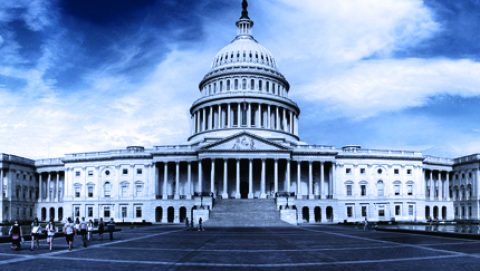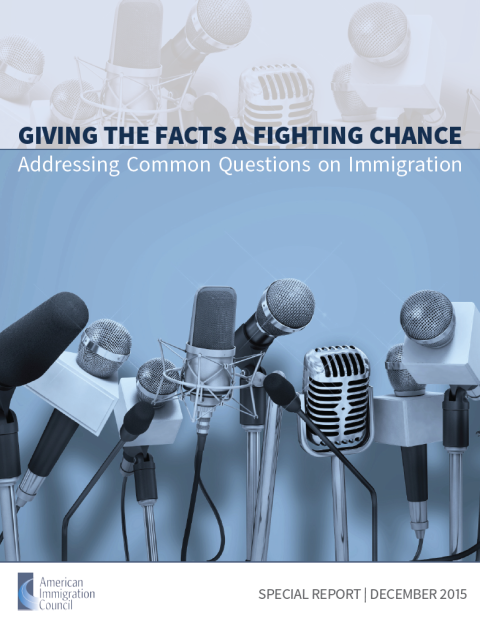High Skilled Labor

Capitalizing on the Economic Potential of Foreign Entrepreneurs
This fact sheet describes the legal avenues in the United States available to promising entrepreneurs, as well as some of the barriers they face securing immigration status through these paths. Read More

The RAISE Act
The Reforming American Immigration for Strong Employment Act (RAISE Act) or S. 354 would mark a sweeping overhaul of the U.S. immigration system. It would significantly reduce levels of legal immigration to the United States. Read More

Foreign-born STEM Workers in the United States
Foreign-born workers make up a growing share of the country’s STEM workforce and are critical to the country’s innovation, and STEM workers are responsible for many of the cutting-edge ideas and technologies that create jobs and raise the living standards of U.S. households. Read More

The H-1B Visa Program and Its Impact on the U.S. Economy
This fact sheet provides an overview of the H-1B visa category and petition process, addresses the myths perpetuated about the H-1B visa category, and highlights the key contributions H-1B workers make to the U.S. economy. Read More

The EB-5 Visa Program: What It Is and How It Works
The Immigrant Investor Program, also known as “EB-5,” has become an increasingly important source of investment for development projects in the United States, attracting billions of dollars to the U.S. economy and creating tens of thousands of jobs in the United States. Read More

The Global Battle for Talent and People
America’s strength lies in its openness and dynamic character. Current concerns about the U.S. economy should not distract from an understanding that in the long term America’s economic success requires the nation to attract 1) skilled professionals from across the globe to increase the competitiveness of American companies and 2) workers at the lower end of the skill spectrum to fuel the growth of the U.S. labor force, filling jobs created by the aging of the population. Read More

Giving the Facts a Fighting Chance: Addressing Common Questions on Immigration
Americans pride themselves on belonging to a nation of immigrants. In fact, many Americans celebrate not only the traditions of the United States, but the traditions of the countries from which their families came. Today, immigrants make enormous contributions to our economy and our communities—just as they always have. Yet… Read More

Health Worker Shortages & the Potential of Immigration Policy
Foreign-born and foreign-trained professionals play an important role in the delivery of health care in the United States. This report examines the important role of immigrant doctors and nurses – many of whom have received their training abroad – in the U.S. health industry, using new Census Bureau data as well as information from numerous interviews with health industry experts. Read More

Fueling the Recovery
How High-Skilled Immigrants Create Jobs and Help Build the U.S. Economy With the U.S. economy still recovering, it may seem counterintuitive to believe that any industry would benefit from having more workers. But that is precisely the case when it comes to those industries which depend upon highly skilled workers. The United States has long faced a dilemma in this respect: the U.S. economy is, in general, absorbing more high-skilled professionals than the U.S. educational system produces or that are available in our workforce. That is one reason so many highly skilled workers in the United States are immigrants. For instance, in “STEM” occupations (science, technology, engineering, and mathematics), the foreign-born account for 26.1 percent of workers with PhDs and 17.7 percent of those with master’s degrees. However, arbitrary limits imposed by the U.S. immigration system, particularly the inadequate supply of green cards and H-1B visas, have restricted the ability of the U.S. to compete in the global battle for talent and ideas. Given that highly skilled professionals tend to create jobs through their innovative work, such limits are economically self-defeating. High-skilled immigrant workers create new jobs. Read More

Rebuilding Local Economies
Innovation, Skilled Immigration, and H-1B Visas in U.S. Metropolitan Areas Although immigration policy is debated at the national level, its impact is most often felt in local and regional communities. This is certainly true for the H-1B program, which is routinely studied at the national level, but cannot be fully understood without driving down to examine the role of H-1B workers at the metropolitan and local levels. New research at this more specific level of analysis suggests that current H-1B policies must be made both flexible and nuanced. There is no “one size fits all” approach to the recruitment, hiring, and retention of high-skilled foreign workers. As lawmakers consider changes to the H-1B program, including the creation of a High Skilled Jobs Demand Index, it is essential to remember that demand for H-1B workers in many metropolitan areas is high, varies by industry, and has ripple effects throughout a regional economy. Thus, predicting and calculating the need for H-1B workers requires an understanding of the dynamics at the metropolitan level. Metropolitan Area Demand for High-Skilled Workers is High, Especially in Innovation Industries Innovation-intensive metropolitan areas tend to have higher rates of patenting, lower unemployment rates, and higher demand for high-skilled workers since patenting growth is correlated with job growth, population growth, and increases in educational attainment. Read More
Make a contribution
Make a direct impact on the lives of immigrants.
